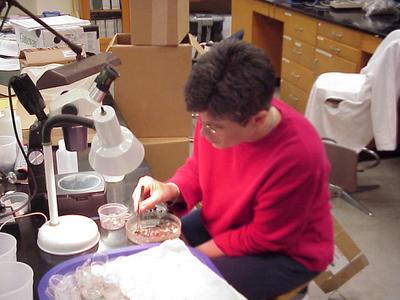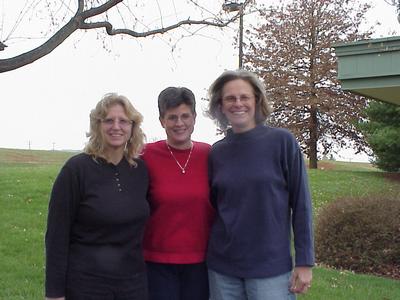
|
|
27 March, 2002
I spent the morning today in Dr. Grebmeier's lab. Once again, people
willingly answered my wide ranging questions. I asked about my gear,
the project, and the lab equipment being used. Dr. Becky Brown, a
former high school biology teacher, was sifting through the material
from a grab sample (the sediments are "grabbed" from the bottom and
brought to the surface.) She patiently identified and sorted each
invertebrate using a binocular microscope. For each station, the
organisms are sorted in order to identify the dominant organisms both
by number and by biomass. The bottom organisms are an important part
of the carbon cycle. Kathy Stevens (TEA 2001) was doing similar I.D.
work on organisms from a core sediment sample. In addition, the
sediments are separated by size to help determine the organisms that
are found there. At least one other test is done on the core sample,
an 18 hour test for oxygen uptake. Why is all of this sampling of
benthic (bottom dwelling) macro (large) invertebrates (animals
without backbones) important? For one thing, some birds (ex. the
speckled eider) and many marine mammals (ex. walrus and gray whales)
utilize these organisms as a food source.

Dr. Becky Brown spends some of her time sorting the organisms brought up in a sediment grab sample.

These are some of the organisms brought up in a core sample. Most of them are bivalves (two shells). The pencil is there to give you an idea of the size.

Kathie Stevens (TEA 2001) traveled with Dr. Grebmeier on the Polar Star. She now spends some of her time in the lab sorting samples.

Just before leaving, we took a picture of the three of us. From left to right are Dr. Jackie Grebmeier, Kathie Stevens, and me.
Contact the TEA in the field at
.
If you cannot connect through your browser, copy the
TEA's e-mail address in the "To:" line of
your favorite e-mail package.
|
